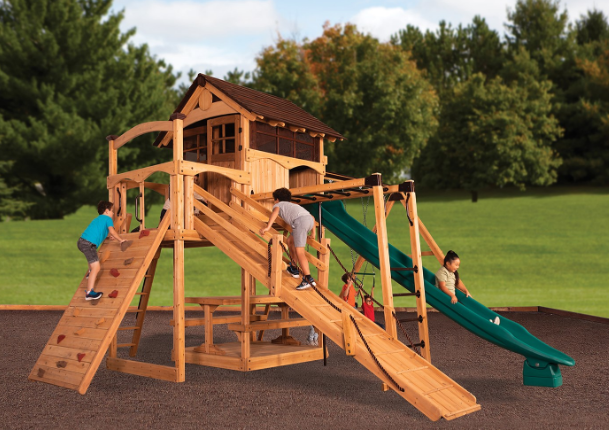Overview of Playground Safety Concerns
Playground safety is a critical issue for parents, schools, and communities. Each year in the United States, emergency departments treat more than 200,000 children aged 14 and younger for playground-related injuries. About 56% of these injuries are fractures, contusions, and abrasions. The safety of kids playground equipment can significantly impact these numbers.
Critical Risk Factors in Playground Equipment
Material and Design: Playground injuries often relate to the materials used in equipment. Metal equipment can heat up to dangerous temperatures in the sun, leading to burns, while wood can splinter, causing cuts and infections. Plastic, though safer temperature-wise, can crack and degrade over time, especially under UV exposure.
Installation and Maintenance Issues: Proper installation and regular maintenance are crucial for ensuring safety. Inadequate installation can leave equipment unstable, which might collapse under stress. Regular inspections can identify risks such as rusted screws, weakened support beams, or worn out connections, which are common issues leading to accidents.
Statistical Insights on Playground Accidents
Data indicates a high incidence of injuries on playgrounds due to falls, accounting for more than 70% of all playground-related accidents. Surfaces under the equipment often fail to meet safety standards—about 60% of public playgrounds have inadequate shock-absorbing surfaces such as sand, rubber mats, or fine gravel.
Technological Enhancements for Safer Playgrounds
Recent advancements include the use of better cushioning materials that absorb impact more efficiently and durable, non-toxic materials for equipment. Smart playgrounds incorporate technology that alerts maintenance teams about equipment wear or potential safety issues through IoT sensors.

How to Choose Safe Playground Equipment
When selecting kids playground equipment, consider the manufacturer's reputation for safety and the material quality. Ensure that the installation team follows the manufacturer's guidelines strictly. Regular maintenance schedules should be a priority to keep the equipment safe for children over the years.
Check for Certifications: Ensure the equipment meets international safety standards such as those from the ASTM International or the Consumer Product Safety Commission in the U.S. Certifications indicate compliance with rigorous safety norms.
Involve Professionals: Using professional services for installation and maintenance can prevent many common issues associated with playground safety. These professionals are trained to handle the specific needs of playground equipment, from proper anchoring to regular inspections for wear and tear.
Safety in playgrounds is paramount, and the risks can be significantly mitigated by choosing high-quality, well-maintained equipment. Parents and caregivers must also supervise young children on playgrounds to enhance safety further.